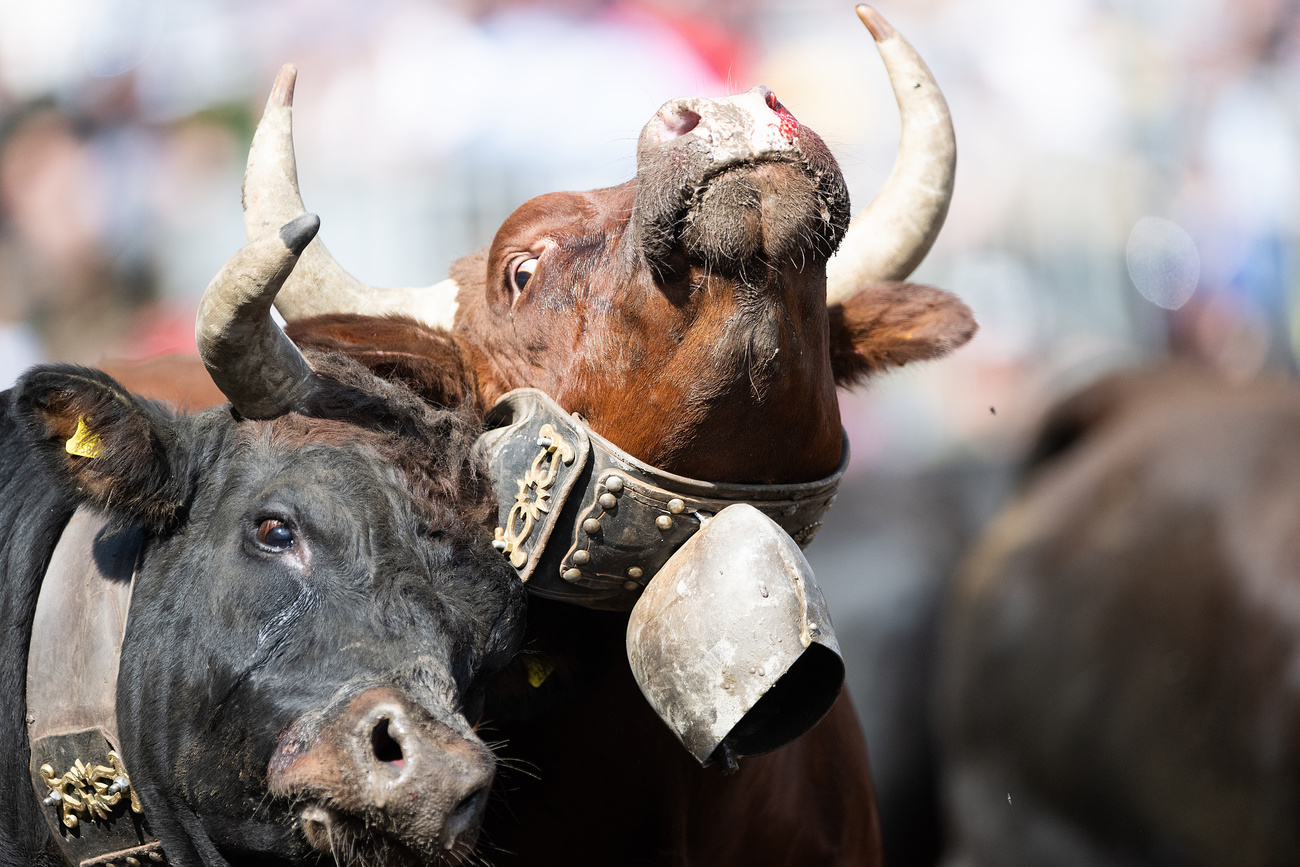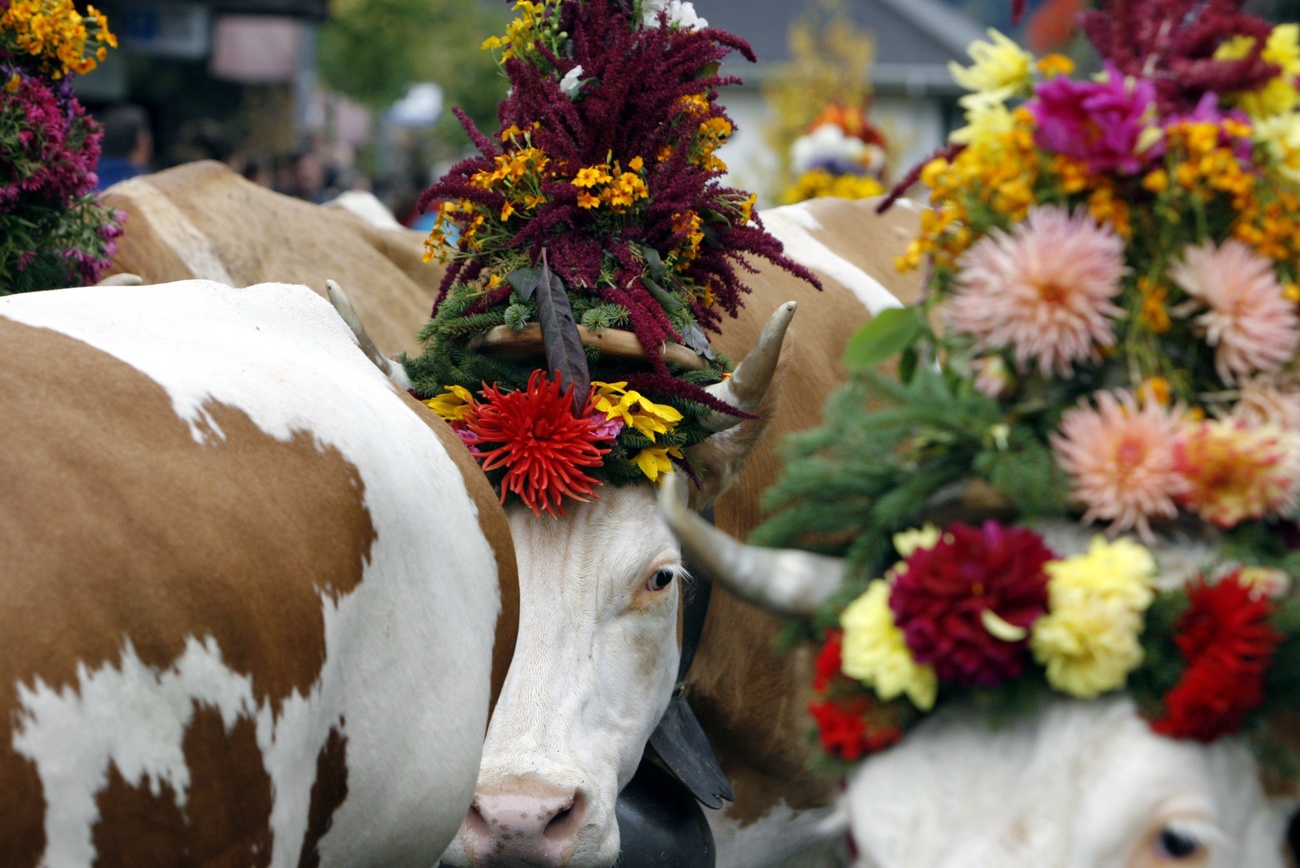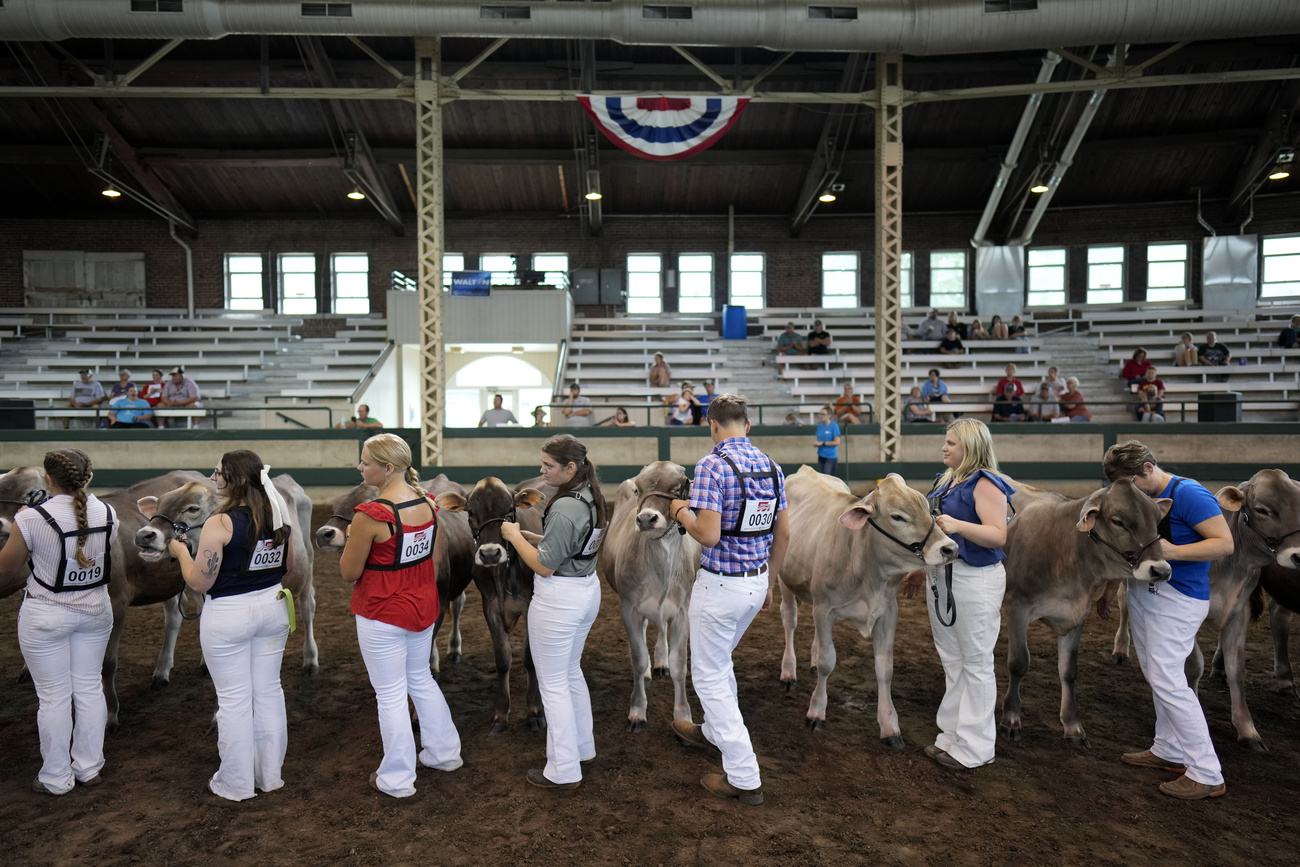
The difficult search for real Swiss cows

For tourists and locals alike, cows are inextricably linked with the image of Switzerland. But in most cases, this Swiss national symbol has non-Swiss origins. The search for an authentically Swiss cow is hard.
In Switzerland, cows are everywhere: in souvenir shops in the form of wooden figurines, on the packaging of many dairy products, and in art and folklore.
And, of course, in the fields and stalls. According to the animal statistics website IdentitasExternal link, at the end of April 2025 there were 1,505,003 registered cattle in Switzerland, including 664,032 cows. Cattle are the most common domesticated animal family in Switzerland – at least if we limit ourselves to declared and registered animals.
Cattle have been present in Switzerland for a very long time. The first traces of domestication date back to the Neolithic period, according to the Historical Dictionary of SwitzerlandExternal link. Over the centuries, cattle rearing grew considerably, with cheese even becoming one of Switzerland’s main exports at the end of the 18th century.
So you would expect Switzerland to have many different breeds of cow. But that’s not the case – or rather, it’s no longer the case.
“Of the 35 breeds once documented in Switzerland, only five remain: the original Brown Swiss, the Hérens breed, the original Simmental spotted breed, the Évolène breed and the Rätisches Grauvieh (Rhaetian grey cattle),” laments Pro Specie RaraExternal link, a foundation whose aim is to preserve Switzerland’s plant and animal heritage.
This impoverishment of varieties can be explained by the quest for greater productivity. “These days, cattle breeding is not spared by the law of specialisation. Old breeds are being supplanted by new breeding lines that either are highly productive in terms of milk or produce a lot of meat very quickly,” the foundation says.

More
How are you, Switzerland? Let us know in our 2025 survey
Given this trend, it has become difficult to find pure Swiss cows in fields. Most have all or part of their genetic heritage from abroad.
Swiss cows conquer the world
Some people may regret this development. However, they may take comfort from the fact that millions of cows around the world have Swiss genes. Swiss cows have also had their moment of glory on international markets.
The most striking example is the Simmental. Originating in the Simme valley in the Bernese Alps, this sturdy, good-milking, fast-growing cow was exported to Italy as early as the 15th century, according to certain texts. Exports exploded in the 19th and 20th centuries, reaching as far afield as South America and Russia.

It is estimated that there are between 40 million and 60 million Simmental descendants in more than 30 countries on every continent. They are used mainly for meat production.
Originally from canton Schwyz, the brown breed has also enjoyed a successful international career, particularly in the United States, where it has become known as the Brown Swiss. Considered to be one of the oldest dairy breeds in the world, it produces milk that is highly suitable for cheese production.
“The fat to protein ratio in Brown Swiss milk is ideal for cheese, thus making them one of the most popular breeds around the world for cheese making,” says the Michigan State University websiteExternal link.
The cow is well established in the United States, particularly in the states of Wisconsin, Ohio and Iowa, notes the Brown Swiss AssociationExternal link. From the US, the Brown Swiss has conquered the world. It is estimated that there are more than six million animals in more than 80 countries.

In search of the lost cow
However, this globalisation of cattle has had a detrimental effect on local breeds. Of the five breeds that can still be described as authentically Swiss, three are threatened with extinction, according to Pro Specie Rara: the original Simmental, the Évolène and the Rätisches Grauvieh.
But international trade is sometimes also a solution when it is necessary to go beyond national borders to save a breed. This is what happened with the Rhaetian grey cow. Once widespread in the Graubünden Alps, this hardy animal, well adapted to its environment, was gradually supplanted by the brown cow, until it disappeared from the Swiss landscape in the 1920s. Pro Specie Rara succeeded in reintroducing the species to Switzerland in the 1980s from a few remaining numbers in the Tyrol.
However, the search for the lost cow is not always successful, as the case of the Fribourgeoise shows. The Fribourgeoise was a white cow with black spots that was very common in canton Fribourg. But this local breed was mixed so much with the Canadian Holstein cow, which was also black and white but a much better milk producer, that it ended up disappearing in the 1970s.
A real identity tragedy for Fribourg – the canton with the most cows, the birthplace of Gruyère and double cream, and whose flag is black and white! But there was still hope: some Fribourgeoises were found in Chile, where many people from Fribourg had emigrated and where they had imported cows in the 1930s.
Specialists from Pro Specie Rara went to South America to investigate. The verdict in 2009 dashed Fribourg’s hopes: the Chilean cows were not sufficiently different from the local varieties and the Holstein cow to qualify as descendants of the Fribourg breed.
Fribourg has lost its emblematic cow but has kept the ‘Ranz des vaches’, a simple melody traditionally played on the horn by Swiss Alpine herdsmen as they drove their cattle to or from the pasture. Bernard Romanens’ rendition from the 1977 Fête des vignerons is considered to be the best version ever recorded:
If not the breed, at least appearances could be saved. You can still see black and white cows grazing in the green valleys of the Gruyère region. But they are … Canadian.
Edited by Samuel Jaberg. Adapted from French by Thomas Stephens
More

In compliance with the JTI standards
More: SWI swissinfo.ch certified by the Journalism Trust Initiative

































You can find an overview of ongoing debates with our journalists here . Please join us!
If you want to start a conversation about a topic raised in this article or want to report factual errors, email us at english@swissinfo.ch.